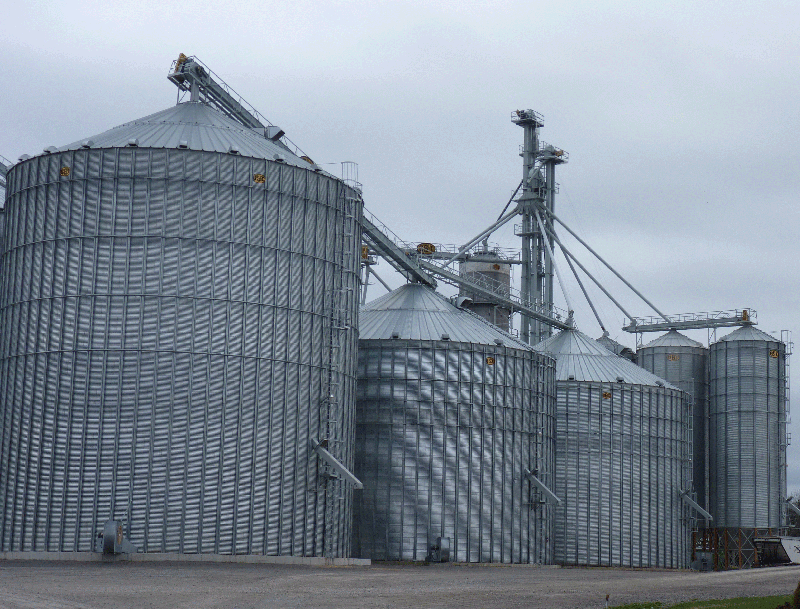Biosecurity for grain
FARM PRACTICES MAY INTRODUCE OR SPREAD PESTS

WHILE MOST PRODUCERS recognize the importance of having good biosecurity plans and practices for livestock, biosecurity practices as they relate to grain aren’t as common.
It’s tough to control the way the wind blows or how much rain falls, but there are a number of things grain growers can do to significantly reduce the risk of introducing or spreading weeds, insects, bacteria, fungus, and other pests in their fields. Not only does good crop biosecurity mean better yields, it can increase bottom lines, keep an infestation from moving from farm to farm, and maintain access to domestic and export markets.
Bill Ungar, professional agronomist and certified crop advisor, takes farmers through a step-by-step assessment of the different ways infestations can happen when he leads free, half-day biosecurity workshops administered by the Ontario Soil and Crop Improvement Association.
“I never thought of that!” is one of the phrases Ungar hears regularly during his workshops, especially when he suggests using Virkon — a common disinfectant used in livestock operations — for boots and equipment that move from field to field.
PREVENTING MOVEMENT
Ungar points out that the principles of livestock and crop biosecurity are the same — to prevent the introduction of pests that compromise the health and productivity of farmers’ commodities. One of the best ways he says to do this is to control access to fields and to make sure service people like custom operators and scouts follow good biosecurity practices.
As an example, he says soybean cyst nematode is spread by soil. “When a custom operator comes on your field, you don’t have control over where that equipment has been, so it’s best to make sure it’s clean,” he says. He also recommends that farmers leave checking an infected field to the end of the day to prevent spreading the disease or pest around the farm.
Ungar provides workshop participants with help in developing their own comprehensive biosecurity action plans. These can be used not only for protecting crops, but also for obtaining cost-share funding from the Growing Forward 2 program for any upgrades that growers may need.
Paying attention to and tightening biosecurity for crops is relatively new in Canada. In 2011, the Canadian Food Inspection Agency (CFIA) worked with Agriculture and Agri-Food Canada and the industry to develop a voluntary, farm-level biosecurity standard for grains and oilseeds. It sets out targets for minimizing the risk of pest infestations, as well as for making sure biosecurity plans are understood and used by anyone working on farms.
IDENTIFYING RISK AREAS
In 2013, the CFIA published a companion guide to help producers assess and reduce the risks.
For each target outcome in the standard, the guide has basic, moderate, and advanced risk mitigation procedures that can be followed, depending on how stringent the farmer wants to be with his or her biosecurity plan.
Following are areas the guide tells farmers to watch for.
- Inputs like seeds, fertilizer, and manure can carry diseases, such as fusarium and clubroot, or contain weed seeds, such as velvet leaf or giant ragweed, if proper cleaning and testing is not done. Getting seed only from a licensed or certified seller can help with this.
- Equipment like sprayers, tillage equipment, and combines that move onto and around the farm can carry pests, such as clubroot, soybean cyst nematode, black-leg, and fusarium, and insects, such as cereal leaf beetle, wireworm, and swede midge. Having a strict cleaning protocol can prevent the spread of these pests. As the guide says, “Cleaning off the combine may be considered more critical than cleaning out the combine”.
- The seed variety and rotation sequence for crops can mean a greater possibility for infestations. An example given in the guide is that a corn crop followed by a wheat crop could present a risk for fusarium, even though the corn crop showed little infection. Knowing and using best management rotation practices is a good way to reduce this risk.
- Neglecting to carefully monitor crops for infestations means they are not detected and managed quickly enough, and can get out of control. Here the recommendations are anything from do-it-yourself regular monitoring to using scouts, satellite imagery, aerial photography, and yield maps.
- People and vehicles can be carriers of many different pests. Trades people and especially field scouts who travel widely to different farms need to follow good biosecurity practices.
- Storing, handling, and transporting the crop affects how infestations may be transmitted to other farms, especially if the crop is used as feed for animals. Good practices include using clean bins, being careful about moisture and temperature during storage, keeping bin samples, and monitoring and (if necessary) fumigating insect infestations.
- Developing, updating and renewing management plans, as well as documenting and sharing biosecurity plans with family and staff helps everyone know, and use, the good practices that will reduce the possibility of your crops being infested.
The producer guide provides tools, templates and examples of biosecurity plans, logbooks and signs. It and the voluntary biosecurity standard for grains and oilseeds are available on the CFIA website.
| Pest | Vector |
| Blackleg | seed, crop residue |
| Clubroot residue | seed, soil, equipment and people movement, crop |
| Dwarf bunt | seed, equipment movement |
| Fusarium, a.k.a. tombstone or scab | seed, soil movement, crop residue, wind |
| Mycotoxin Ochratoxin | storage facilities, stored grain residue |
| Soybean cyst nematode | seed, soil, movement, equipment movement |
| Wireworm | soil movement, crop residue, water |
HOW PESTS SPREAD
Diseases, insects, and weeds can sometimes travel and spread in soil, wind, or on/in seed. Understanding the most likely way a pest is transmitted (called a vector) is a good first step in avoiding contamination or spread. •







